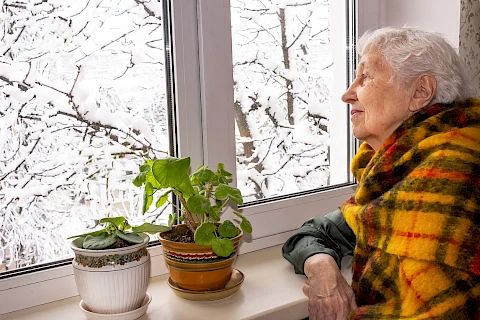
As the colder months roll in, many seniors may experience Seasonal Affective Disorder or SAD. This condition is a type of depression that occurs at the same time each year, typically in the fall and winter. Learning and managing SAD is crucial for maintaining good mental health.
What Is Seasonal Affective Disorder?
Seasonal Affective Disorder is more than just the "winter blues". It is a form of depression linked to the change in seasons, often triggered by reduced sunlight. This lack of sunlight can disrupt the body's internal clock and lead to depression. Seniors are particularly vulnerable to SAD due to age-related changes in their circadian rhythms and possibly because they spend less time outside as the days get shorter.
SAD can have a significant impact on a senior's day-to-day life. It can decrease energy levels, disrupt sleep patterns, and lead to a loss of interest in activities they once enjoyed. The combination of these factors can contribute to a decline in overall health.
Recognizing Symptoms in Seniors
SAD symptoms can vary, but some common ones include:
- Persistent low mood and fatigue
- Change in appetite, often with a preference for carbohydrates
- Weight gain
- Difficulty concentrating
- Withdrawal from social interactions
SAD symptoms in seniors can differ from those seen in general depression. Seniors might express confusion or memory problems, which can be mistaken for regular aging processes. Early detection is crucial to managing SAD effectively.
Effective Coping Strategies
Fortunately, there are several ways to combat SAD and improve a senior's quality of life during the winter months. One effective strategy is light therapy, which involves exposure to a bright light that mimics natural sunlight. This can help regulate mood and ease symptoms. Encouraging regular exercise can also boost endorphins and improve energy levels.
Maintain social interaction. Joining clubs or participating in group activities can provide emotional support and counter feelings of isolation. Meanwhile, dietary adjustments, such as consuming more omega-3 fatty acids and Vitamin D, can enhance mood. Supplements should always be discussed with a healthcare provider.
When to Seek Professional Help
While lifestyle changes can help manage symptoms, there are times when professional help is needed. If the symptoms of SAD are severe or don't improve with self-care measures, it's time to seek help. A healthcare provider might suggest talk therapy, medication, or a combination of both as part of the treatment plan.
Medical professionals help diagnose and treat SAD. They can offer personalized strategies and support seniors with ongoing management of the condition.
Contact Senior Helpers Mission Viejo for Compassionate Senior Care Services
The winter months can be challenging, but taking proactive steps to manage mental health can make a significant difference. If you live in Mission Viejo, San Juan Capistrano, Dana Point, Trabuco Canyon, or Rancho Santa Margarita, Senior Helpers Mission Viejo is here to offer support and resources. Contact us to learn more about our senior care services and support.